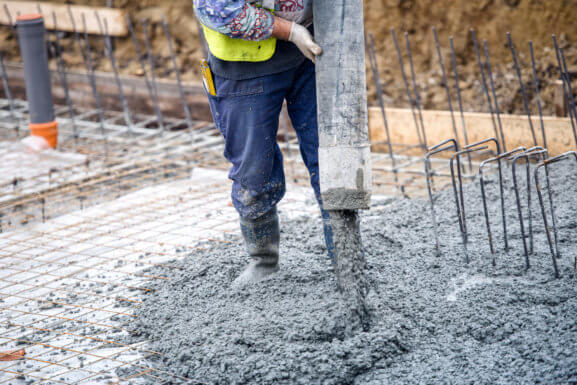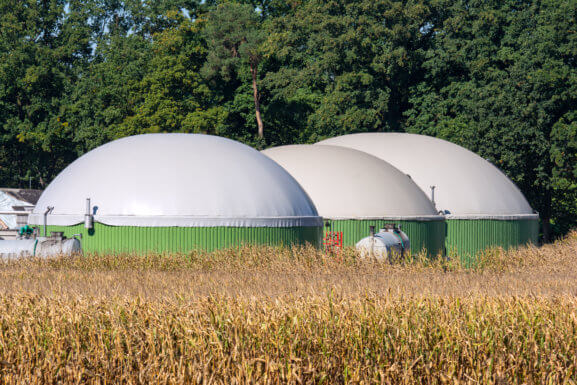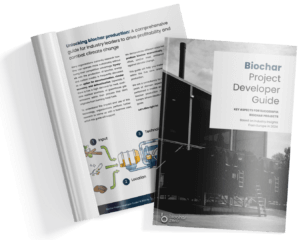With a certain ambition asphalt can achieve CO2 neutrality. But how? One can integrate regeneratively sourced aggregates, such as biochar and renewable energy into the production steps of asphalt as well as production and application at ambient temperature to achieve reduction of significant emissions.
This article focuses on the circumstances under which biochar is a suitable carbonaceous filler material for asphalt and which effects it has in asphalt.
Advantages of Biochar in Asphalt
- Improved temperature resistance in subtropical and tropical climates
- Increased stiffness and viscosity of asphalt binders and thus increased resistance to deformation1Sheng Zhao et al., Laboratory Investigation of Biochar-Modified Asphalt Mixture, Transportation Research Record: Journal of the Transportation Research Board 2445: S.56-63, 2014
- Improved ecological properties due to carbon storage2European Biochar Industry Consortium, First Green Asphalt implemented in Europe, Oktober 2020, https://www.biochar-industry.com/2020/first-green-asphalt-implemented-in-europe/
Several studies show that biochar tends to improve the performance of asphalt binders at high temperatures and, conversely, worsens it at low temperatures. This makes it advisable to mainly use biochar in asphalt with low compression or asphalt applied in subtropical and tropical climates.
Degree of Development
Research on biochar in asphalt is quite young – however, interest has increased significantly within the last decade.3Rondón-Quintana, Hugo & Fredy, Reyes & Chaves Pabon, Saieth & Bastidas-Martínez, Juan & Zafra-Mejía, Carlos. (2022). Use of Biochar in Asphalts: Review. Sustainability. 14. 4745. 10.3390/su14084745.
Biochar is now being tested to modify asphalt binder and as a replacement for mineral fill materials in asphalt mixes. To produce biochar specifically for use in asphalt, refining treatments, such as grinding the biochar, are necessary.
For example, more rigid asphalt is produced by adding 6 per cent biochar from coconut shells in bitumen (asphalt binder). Temperature-resistant asphalt, on the other hand, is produced with 6 percent very finely grinded biochar from organic waste, for instance4Siti Nur Amiera Jeffry et al., Effects of nanocharcoal Coconut-Shell Ash on the Physical and Rheological Properties of Bitumen, Construction and Building Materials 158, S.1-10, 2018. Asphalt containing 10 percent biochar from switchgrass showed improved resistance to rutting5Sheng Zhao et al., Laboratory Investigation of Biochar-Modified Asphalt Mixture, Transportation Research Record: Journal of the Transportation Research Board 2445: S.56-63, 2014.
In several cycle path pilot projects in the Netherlands, asphalt containing biochar is produced without additional heating and applied at normal or room temperatures (low-temperature asphalt). Only electricity from solar energy is used in the production and application of the biochar-treated asphalt. Curing takes place within three to four hours by sucking a bitumen substitute made from flaxseed and other vegetable oil residues into the remaining components. In this process, 1% biochar was added to the surface layer and 5% each to the binder and base layers. The long-term behavior of the asphalt surfaces under stress and weather conditions is now being observed.
Biochar seems to slow down the aging of the asphalt material, but studies on this are still quite scarce. Also insufficiently studied are: long-term durability, resistance to moisture damage, uv-radiation and fatigue, environmental and economic impacts.
An important note: additive for asphalt is an “end of life” application, this means a final application because the biochar is irreversibly bonded to the asphalt. Therefore biochar should be used that is not usable for any other application due to its ingredients. In most cases, asphalt containing biochar is completely recyclable.
Application
Current pilot projects mainly work with up to 3 mass percent.
An addition of approximately 2-10 percent biochar is considered technically feasible6Bates Albert, Draper K, Cool down – Mit Pflanzenkohle die Klimakrise lösen?, Oekom Verlag, 2021. However, the dosage should be less than 10 percent per volume of the asphalt binder. The biochar must be carefully selected, because each biochar is different due to the starting materials and the way of production.
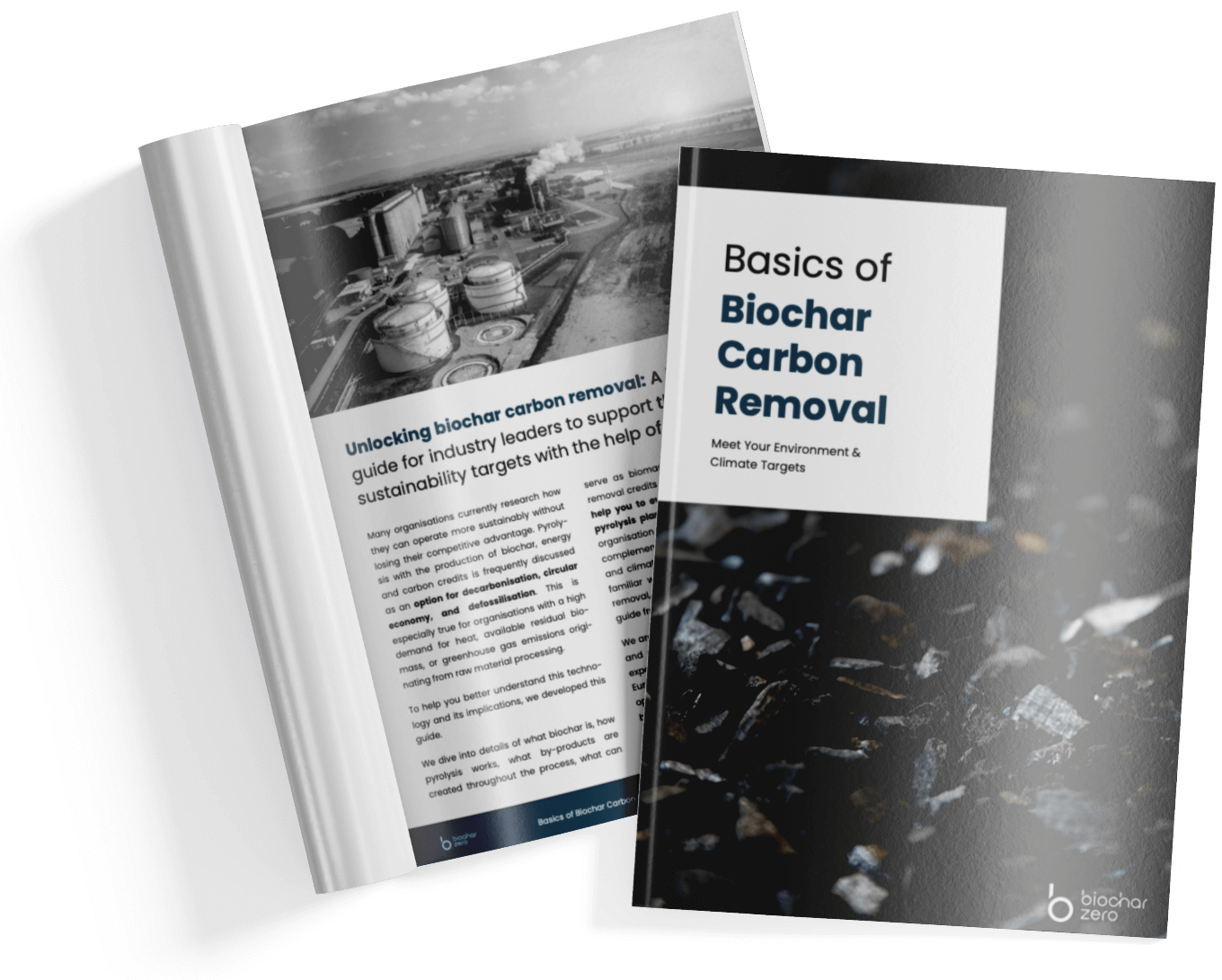
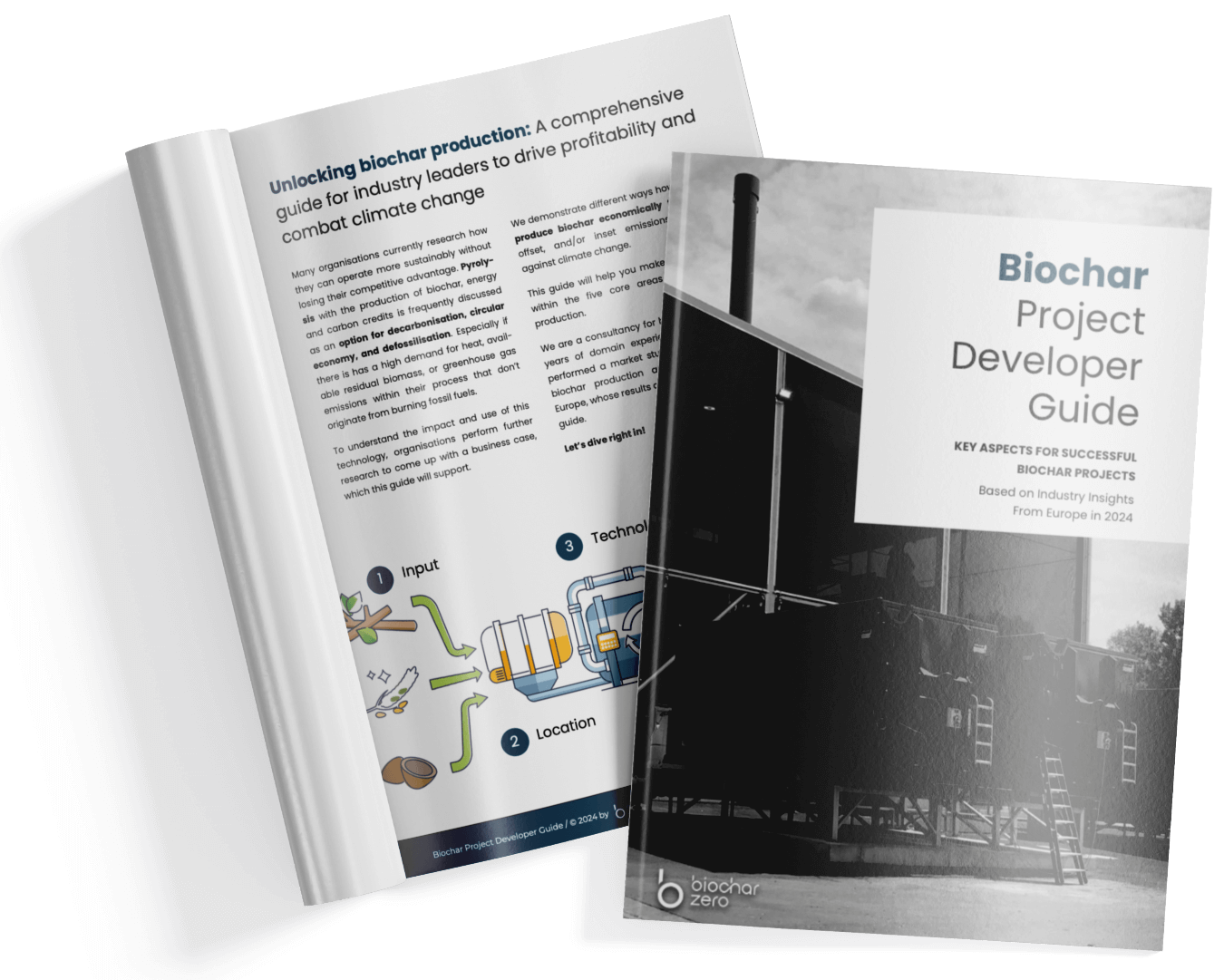
Approval & Certification
If biochar is used in asphalt, it is advisable to observe the regional laws on pollutants. In Germany, for example, there are different requirements for the reuse of asphalt, depending on the degree of polyaromatic hydrocarbons (PAH) it contains, according to which asphalt with more than 10 mg PAH per kg can only be reused under certain conditions.
Biochar to be used in an asphalt product can be certified according to the European Biochar Certificate (EBC) in the lowest quality class EBC-BasicMaterials, which also meets the requirements of the EU-REACH-Regulation7REACH COMMISSION REGULATION (EU) No 1272/2013 of 6 December 2013 amending Annex XVII to Regulation (EC) No 1907/2006 of the European Parliament and of the Council on the Registration, Evaluation, Authorisation and Restriction of Chemicals (REACH) as regards pol. EU-Regulation 2013, 1272/2013.
Since September 2023, if an asphalt additive is to be used outside the European requirements, the World Biochar Certificate (EBC) can be acquired in the WBC material class to guarantee sustainable production.
In the case of asphalt, the possibility of heavy metal leaching is low. For this reason, EBC-BasicMaterials only requires the declaration of heavy metal contents, but does not specify limit values. Organic pollutants must in some cases be analytically detected in compliance with specific limit values. The standard also stipulates that EBC-BasicMaterials “may only be traded to other companies (B2B)” that meet certain requirements in further processing.
Another category is EBC-ConsumerMaterials, which is intended for non-soil applications like EBC-BasicMaterials, but has a more stringent PAH8polycyclic aromatic hydrocarbons limit for use in contact with living organisms and ecosystems. A third suitable category is EBC-Urban, which is used for the application of biochar in e.g. urban greenery and stormwater filtration and is intended to prevent groundwater and surface water from becoming contaminated. This class, unlike EBC-ConsumerMaterials, has a stricter limit for EFSA9European Food Safety Aithority, EFSA opinion on suitable indicators for both the occurrence and toxicity of polycyclic aromatic hydrocarbons (PAHs) in food, 4 August 2008 https://www.efsa.europa.eu/en/news/efsa-opinion-suitable-indicators-both-occurrence-and-toxicity-polycyclic PAHs (1 g/t TS) and the declaration of another 16 organic pollutants according to EPA specifications.
These differences result from the acceptability of biochar for a specific purpose in relation to applicable laws, regulations and relevant industry standards regardless of its suitability. Further classes are to be introduced in 2022, based on demand, e.g. specific to building materials.10EBC (2012-2022) ‘European Biochar Certificate – Richtlinien für die Zertifizierung von Pflanzenkohle’, Ithaka Institute, Arbaz, Switzerland. http://www.european-biochar.org Version 10.1G vom 10. Januar 2022


Sources

